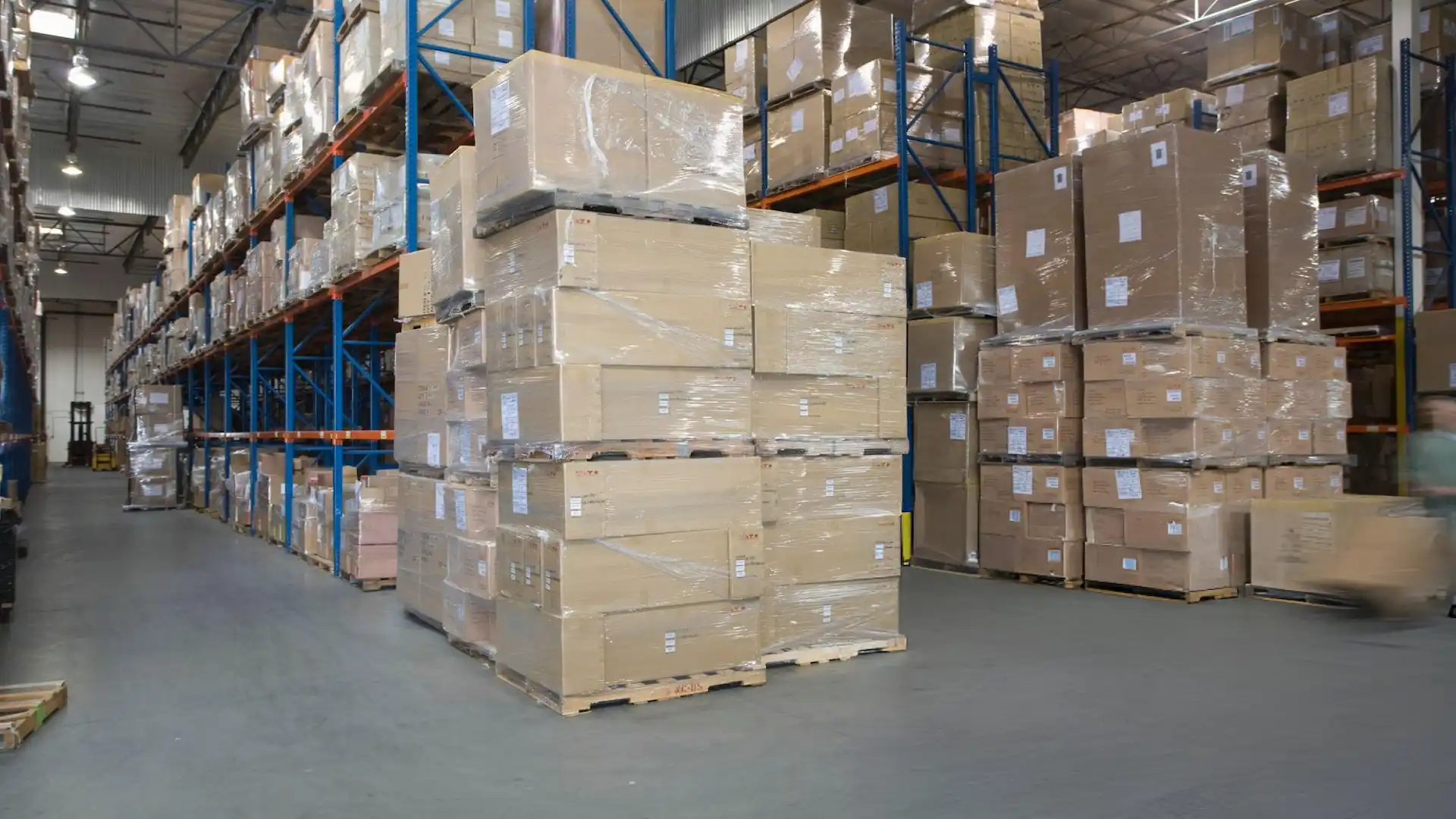How to Handle Seasonal Demand Peaks Without Compromising Service Quality

When the holiday season arrives, managing seasonal demand peaks becomes crucial for e-commerce businesses. Successfully handling these spikes is essential for maintaining competitiveness, as it directly influences customer satisfaction, brand reputation, and overall business success. As e-commerce continues to grow, mastering these demand surges is vital. This article explores strategies that businesses can use to effectively navigate seasonal demand peaks while maintaining high service quality.
Understanding Seasonal Demand Peaks
Seasonal demand peaks refer to periods when consumer demand for products and services surges significantly. These peaks are often predictable, tied to holidays, festivals, or specific shopping events such as Black Friday and Cyber Monday. For e-commerce businesses, preparing for these peaks is crucial to meeting customer expectations and maintaining smooth operations.
Seasonal Planning: Effective seasonal planning involves anticipating demand spikes and making necessary arrangements in advance. This includes forecasting demand, optimizing inventory, and ensuring the fulfillment process can scale to handle increased orders. By understanding the patterns and factors that contribute to seasonal demand peaks, businesses can create strategies to address these challenges proactively.
Importance of E-commerce Logistics
E-commerce logistics plays a vital role in handling seasonal demand peaks. Efficient logistics management ensures that products are stored, picked, packed, and delivered in a timely manner. This includes several components:
- Order Fulfillment: Order fulfillment is the process of receiving, processing, and delivering orders to customers. During seasonal demand peaks, this process must be streamlined to handle increased volumes without delays.
- Supply Chain Management: Supply chain management involves coordinating all activities involved in producing and delivering a product. It is essential for managing the flow of goods from suppliers to customers.
- Inventory Management: Inventory management focuses on maintaining the right balance of stock to meet demand without overstocking or understocking. Effective inventory management helps prevent stockouts and backorders, ensuring customer satisfaction.
Strategies for Handling Seasonal Demand Peaks
Demand Forecasting
Accurate demand forecasting is the foundation of effective seasonal planning. By analyzing historical data, market trends, and external factors, businesses can predict demand peaks and adjust their operations accordingly. Demand forecasting enables companies to plan inventory levels, labor requirements, and logistics resources, ensuring they are well-prepared for increased demand.
Inventory Optimization
Inventory optimization is crucial for meeting customer demand during peak seasons. Businesses need to strike a balance between having enough stock to meet demand and avoiding excess inventory that ties up capital. Techniques such as just-in-time inventory, safety stock, and reorder point optimization can help businesses maintain optimal inventory levels.
Stock Management: Efficient stock management involves tracking inventory levels, monitoring stock movements, and implementing strategies to minimize excess inventory. Businesses can use inventory management software to automate these processes and gain real-time visibility into stock levels.
Enhancing the Fulfillment Process
The fulfillment process is the backbone of e-commerce logistics, and optimizing it is essential for handling seasonal demand peaks. Key aspects to focus on include:
- Order Accuracy: Ensuring order accuracy is vital for customer satisfaction. Implementing quality control measures, such as barcode scanning and automated verification, can minimize errors and improve order accuracy.
- Fulfillment Scalability: Fulfillment scalability refers to the ability to handle increased order volumes without compromising service quality. Businesses can achieve scalability by leveraging technology, optimizing warehouse layouts, and training staff to handle peak loads efficiently.
- Delivery Performance: Timely delivery is critical for maintaining customer satisfaction. Partnering with reliable carriers, optimizing delivery routes, and providing customers with real-time tracking information can enhance delivery performance.
Leveraging Logistics Technology
Logistics technology plays a significant role in managing seasonal demand peaks efficiently. Automation, data analytics, and real-time tracking are some of the technologies that can enhance logistics operations:
- Automation: Automated systems can streamline order processing, picking, and packing, reducing the risk of errors and improving efficiency.
- Data Analytics: Data analytics provides insights into customer behavior, demand patterns, and operational performance. This information can guide decision-making and help businesses optimize their logistics strategy.
- Real-time Tracking: Real-time tracking allows businesses to monitor shipments and inventory levels in real time. This visibility enables proactive decision-making and improves customer experience.
Optimizing Warehouse Management
Warehouse management is a critical component of logistics efficiency, especially during seasonal demand peaks. Effective warehouse management ensures that products are stored and retrieved efficiently, minimizing delays and errors.
- Warehouse Layout: Optimizing warehouse layout can improve the efficiency of picking and packing processes. Businesses should consider the flow of goods, accessibility, and storage systems to maximize space utilization.
- Labor Management: During peak seasons, businesses may need to hire temporary staff to meet increased demand. Proper training and management of temporary workers can ensure they are productive and contribute to the smooth operation of the warehouse.
Enhancing Customer Experience
Customer experience is at the heart of successful e-commerce operations. During seasonal demand peaks, businesses must prioritize customer satisfaction to build loyalty and maintain a competitive edge.
- Communication: Clear communication with customers about delivery times, stock availability, and any potential delays is crucial for managing expectations.
- Flexible Returns: Offering flexible return policies can enhance customer experience and build trust. Customers are more likely to shop with businesses that provide hassle-free returns, especially during peak seasons.
- Personalization: Personalizing the shopping experience can increase customer satisfaction and drive repeat business. Businesses can use data analytics to tailor product recommendations and marketing messages to individual customers.
Developing a Robust Logistics Strategy
A robust logistics strategy is essential for handling seasonal demand peaks effectively. This strategy should encompass all aspects of logistics operations, from demand forecasting to delivery performance.
- Collaboration: Collaborating with suppliers, carriers, and logistics partners can improve the efficiency and reliability of logistics operations. Building strong relationships with partners ensures that everyone is aligned and working towards the same goals.
- Risk Management: Identifying and mitigating potential risks is crucial for maintaining service quality during peak seasons. Businesses should have contingency plans in place to address disruptions in the supply chain, such as delays, stockouts, or transportation issues.
- Continuous Improvement: Continuous improvement is a key component of a successful logistics strategy. By regularly reviewing and analyzing performance data, businesses can identify areas for improvement and implement changes to enhance efficiency.
Embracing E-commerce Growth
The e-commerce landscape is continually evolving, and businesses must adapt to changing consumer expectations and technological advancements. Embracing e-commerce growth involves staying informed about industry trends and leveraging new opportunities to enhance logistics operations.
- Sustainability: Consumers are increasingly concerned about the environmental impact of their purchases. Implementing sustainable practices, such as eco-friendly packaging and carbon-neutral shipping options, can appeal to environmentally conscious customers.
- Omnichannel Integration: Omnichannel integration involves providing a seamless shopping experience across multiple channels, such as online, in-store, and mobile. Businesses can use logistics technology to synchronize inventory and fulfillment across channels, ensuring a consistent customer experience.
- Emerging Technologies: Emerging technologies, such as artificial intelligence and blockchain, have the potential to revolutionize logistics operations. Businesses should explore these technologies to identify opportunities for innovation and improvement.
Conclusion
Handling seasonal demand peaks without compromising service quality is a complex but achievable goal for e-commerce businesses. By implementing effective strategies in demand forecasting, inventory management, fulfillment process optimization, and logistics technology, businesses can navigate peak seasons successfully. Prioritizing customer experience, optimizing warehouse management, and developing a robust logistics strategy are key to maintaining service quality and achieving long-term success in the dynamic e-commerce landscape.
If you're looking to enhance your logistics efficiency and tackle seasonal demand peaks seamlessly, reach out to Atomix Logistics today. Discover how our expert team can help you optimize your supply chain management and order fulfillment processes, ensuring your e-commerce brand delivers top-notch service quality year-round.
FAQ: Handling Seasonal Demand Peaks Without Compromising Service Quality
What are seasonal demand peaks, and why are they important for e-commerce businesses?
Seasonal demand peaks refer to periods of increased consumer demand for products, often coinciding with holidays, festivals, or major shopping events like Black Friday. For e-commerce businesses, these peaks are crucial as they represent significant opportunities for increased sales and revenue. Successfully managing seasonal demand peaks requires effective planning and logistics to ensure high customer satisfaction and maintain service quality during these busy periods.
How can e-commerce businesses effectively manage their inventory during seasonal demand peaks?
Inventory management is vital during seasonal demand peaks to prevent stockouts and overstocking. Businesses can achieve this by using demand forecasting to anticipate peak periods and adjust inventory levels accordingly. Implementing inventory optimization techniques, such as just-in-time inventory and safety stock, can help maintain the right balance of stock. Additionally, utilizing inventory management software can provide real-time visibility into stock levels, enabling businesses to make informed decisions.
What strategies can improve logistics efficiency during seasonal demand peaks?
Improving logistics efficiency during seasonal demand peaks involves several key strategies:
- Automation: Implementing automated systems for order processing and warehouse operations can reduce errors and increase efficiency.
- Scalable Fulfillment Processes: Optimizing warehouse layouts and training staff to handle increased order volumes can ensure smooth operations.
- Reliable Delivery: Partnering with dependable carriers and optimizing delivery routes can enhance delivery performance and meet customer expectations.
How does demand forecasting help businesses prepare for seasonal demand peaks?
Demand forecasting involves analyzing historical data, market trends, and external factors to predict future demand. For businesses, accurate demand forecasting helps anticipate seasonal peaks, allowing them to adjust inventory, staffing, and logistics resources in advance. This preparation ensures they can meet increased demand without compromising service quality, thereby improving customer satisfaction and maximizing revenue during peak seasons.
What role does customer experience play during seasonal demand peaks, and how can businesses enhance it?
Customer experience is critical during seasonal demand peaks as it directly impacts customer satisfaction and brand loyalty. Businesses can enhance customer experience by ensuring timely and accurate order fulfillment, providing clear communication about delivery times and stock availability, and offering flexible return policies. Personalizing the shopping experience through tailored recommendations and promotions can also improve customer satisfaction and drive repeat business during peak seasons.

.svg)
.svg)
.svg)




